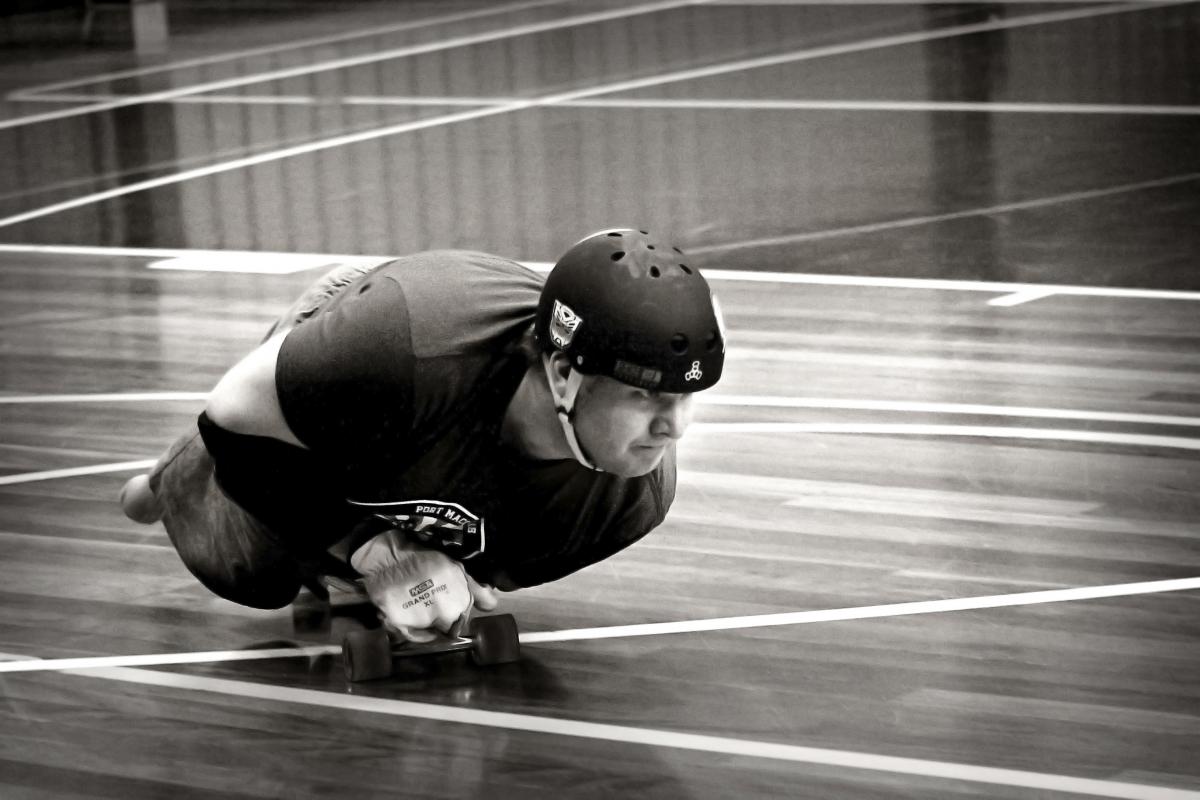On Thursday 19 May 2022, people from around the world will come together to celebrate Global Accessibility Awareness Day (GAAD). In what started out as a simple blog post nine years ago, GAAD has now grown into a global event that sheds light on the importance of digital accessibility and inclusion for all. And at Digital NSW, we're so grateful to see how far accessibility has come all this time.
To mark this special event, we caught up with Steve Lyons, a passionate advocate and accessibility ambassador who has overcome many physical barriers to live an independent life. With a strong drive to build inclusive communities, Steve has been working with education and government to help get us get closer to the goal of digital accessibility - making sure all people can access the same information.
Hey Steve! Tell us about your role at TAFE NSW and one recent thing you've done or worked on that you are proud of?
I'm a member of the TAFE NSW Systems Group who handles many IT support functions, both staff and student. This group includes the Staff and Student Service Desks. Currently I am on secondment to the TAFE NSW Disability Inclusion Action Plan (DIAP) Project. My role in this project is to liaise on technology matters within the DIAP as well as helping with testing of accessible technology, be those physical aids, like my very cool one-handed Bluetooth keyboard, a screen reader and up to and including VR (virtual reality) and AR (Augmented Reality). I'm also currently involved with projects to update TAFE NSW's Workplace Adjustment and Personal Emergency Evacuation Plan procedures.
I've worked for TAFE NSW since the end of 2003 and for most of that time I was on the Service Desk - and yes, I did say "have you tried turning it off and back on" more times than I can remember. In response to the pandemic, TAFE NSW switched to a blended delivery model with a lot of online teaching. Very quickly it was realised that we would need a service to support our students and so the Student Technology Service Desk was formed, and I was one of the original staff on that team.
We helped with everything from "how do I reset my password?" to "how do get to my Teams class" and so many other requests that it is hard to remember them all. One I do remember was coaching a student on how to connect to his course, he would call every week and somehow, always got me. He explained that he was doing the course so that he could email and facetime his grandchildren in Europe who he couldn't go and see. It was then that I realised that I was more of a coach than just "IT Support" and the positive feedback I got from that. Being a member of that team easily rates as my proudest moment.
You're part of the new Accessibility Ambassadors program - what inspired you to join, and what difference are you trying to make in your organisation?
Once I figured out exactly what it was and what we were trying to do, it has been incredibly humbling to be an ambassador. It's one thing to be included in the Disability Inclusion Action Plan for TAFE NSW, where I'm currently involved in workplace adjustments and personal evacuation planning procedures, as well as the general day-to-day work of making sure that our organisation is inclusive for staff and students. To also try and then do that for the whole of New South Wales government is very humbling and I'm and I'm extremely honoured to be included in this group.
Can you tell us about a time when a digital accessibility issue prevented you from doing something you needed to do?
One that really stands out to me isn't just a digital accessibility issue but a physical accessibility issue as well and that is the inconsistent height of the QR codes. For me, I am lower to the ground than somebody in a wheelchair and I often cannot reach the QR code on my skateboard.
When we talk about accessible and inclusive design, we need to talk about lenses. If you design a digital product without a physical accessibility lens, then you're not considering absolutely everybody. If I can't sign in with your QR code because you put it up too high at a store or supermarket, that's an instant barrier for me.
Can you think of a time when you had a really good experience with digital products or services? What made it a good experience?
I'm a returning convert to the world of Apple. The latest generation of iPhones, watches and tablets is a real game changer. The ecosystem that Apple has created to make things easier for you is quite amazing. I can call my partner, send text messages, check all this sort of stuff by just talking to my wrist. I feel a little bit like Captain Kirk at times, which is good because it plays in with my nerd stuff.
Do you use digital accessibility considerations in your work? If so, how do you do it?
One hundred per cent. Before I got this gig, I was doing a lot of business proposals and document creations, and I was always very conscious to make sure that I wasn't using colours that would not be visible for somebody with colour blindness. And making sure that there is alt text in images, as well as ensuring documents are easy to understand and not full of jargon.
It's important when we assess any document that we ask the question, 'is it accessible?'.
What is one piece of advice you'd like to give people who work on digital products/services?
Accessibility tech has a lot of unfinished business to get right, so one piece of advice that I love is simply 'Don't make technology that disables people.'
